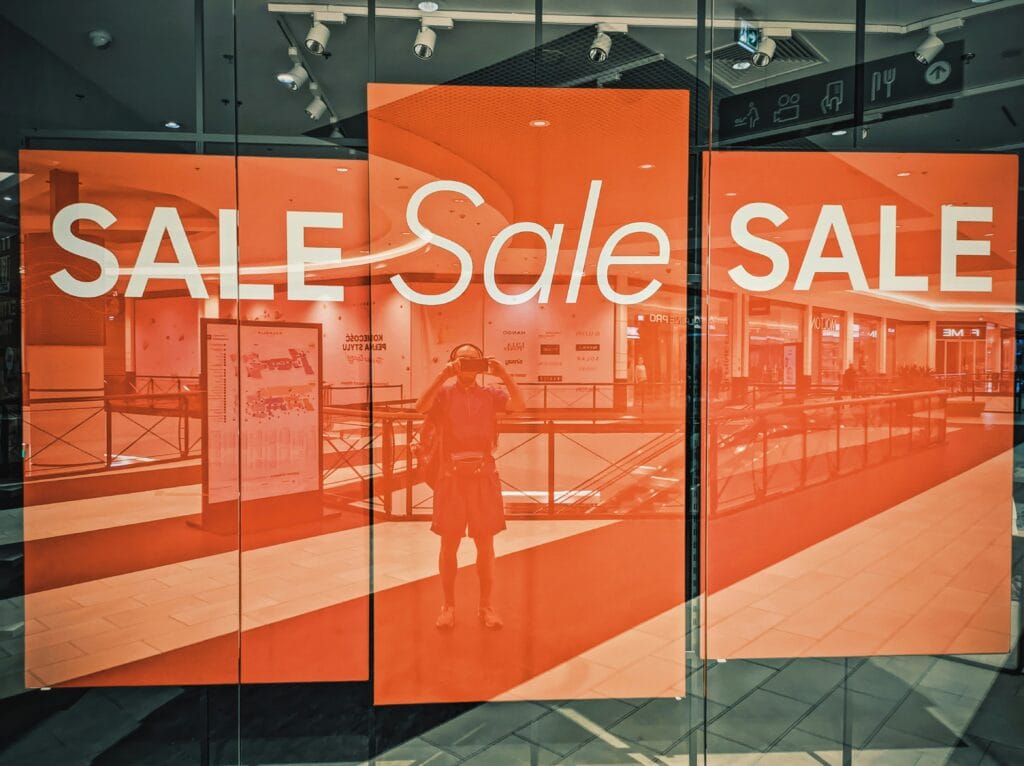Week 43 has arrived with a surge of eCommerce news that spans from infrastructure failures to breakthrough innovations reshaping how we shop online. While many retailers are laser-focused on their product pages and checkout flows, they’re overlooking a critical touchpoint that could be generating additional revenue with minimal effort: the order confirmation page.
This week’s eCommerce landscape presents a fascinating paradox. On one hand, we’re witnessing the rapid evolution of AI-powered shopping experiences, with major players like Walmart integrating ChatGPT and Alibaba monetizing AI commerce at scale. On the other hand, a single AWS outage served as a stark reminder of how fragile our digital infrastructure remains—sending customers scrambling to place orders via phone calls, a scenario that felt oddly nostalgic for the pre-internet era.
Beyond these headline-grabbing stories, Shopify has rolled out platform upgrades that promise to level up merchant capabilities, while the ongoing tariff situation is forcing retailers to rethink their holiday strategies. Meanwhile, Amazon’s latest hiring spree offers revealing insights into the company’s expectations for the upcoming shopping season.
From underutilized confirmation pages that represent untapped revenue opportunities to the infrastructure challenges that can bring eCommerce to a standstill, this week’s developments underscore both the incredible potential and inherent vulnerabilities of modern digital commerce. Whether you’re optimizing your post-purchase experience or preparing for potential platform disruptions, understanding these trends isn’t optional—it’s essential for staying competitive in an increasingly complex eCommerce environment.
Order Confirmations as an Untapped Sales Opportunity
Look, I get it. Order confirmation emails feel like the digital equivalent of “thanks for shopping, here’s your receipt.” You set them up once, they fire automatically, and you move on to more exciting things like abandoned cart flows or that new Facebook ad campaign.
But here’s what caught my attention this week: order confirmations have a 48% open rate. That’s not a typo. While your promotional emails are lucky to crack 20%, these things get opened nearly half the time. And yet, most stores treat them like an afterthought.

Why This Matters for Your Store
Think about the psychology for a second. Someone just handed you money. They’re in a good mood, they’re engaged with your brand, and they’re actually reading your email. According to recent research from Omnisend, this is prime real estate for ecommerce innovation.
The trick is understanding what works without being pushy. You don’t want to turn a “thanks for your order” into a sales pitch that feels gross. But you can absolutely use that moment to:
- Suggest complementary products they might actually need
- Offer a small discount for their next purchase
- Encourage them to join your loyalty program
- Get them to follow you on social media
One brand I saw recently included a simple “Complete the look” section with three related products. Nothing aggressive, just helpful suggestions. They saw a 15% uptick in repeat purchases within 30 days. Not bad for an email most people ignore.
The Real Opportunity in Week 43’s eCommerce News
What makes this relevant right now is that we’re heading into Q4. Your customers are already in buying mode, and order confirmations become even more valuable when people are shopping for gifts or stocking up for the holidays.
The key is keeping it natural. Your order confirmation should still feel like an order confirmation, not a disguised sales email. Start with the essentials (order number, shipping details, tracking info), then add value. Maybe it’s care instructions for what they bought. Maybe it’s a quick video showing how to use the product. Or yeah, maybe it’s a few related items they might want.
Just remember: you’ve already got their attention. The question is what you’re going to do with it. And if you’re still sending those default Shopify confirmations with zero personality or strategy, you’re leaving money on the table every single day. Consider exploring why your order confirmation might be your secret sales weapon to unlock this potential.
Amazon Web Services Suffers Major Internet Outage
When Half the Internet Takes a Coffee Break (Without Warning)
So remember how we were just talking about keeping customers happy with those order confirmations? Well, imagine if your entire online store just… disappeared. Not because you forgot to pay your hosting bill, but because Amazon Web Services decided to have a really bad Monday morning.
Last week, AWS went down hard. And I mean hard. We’re talking about a massive outage that started around 3 a.m. ET and took down some seriously big names. Snapchat, Roblox, Fortnite, Ring doorbells, Coinbase, Venmo, even McDonald’s app. According to NBC News, Downdetector received 6.5 million reports of sites and services being offline worldwide.
Now, you might be thinking, “That’s AWS’s problem, not mine.” But here’s the thing. If you’re running an eCommerce store in 2025, there’s a pretty good chance you’re touching AWS somewhere in your stack. Maybe it’s your hosting, maybe it’s your payment processor, or maybe it’s that fancy chatbot you just set up. AWS controls about a third of the cloud infrastructure market, and when it sneezes, a lot of the internet catches a cold.
The Real Cost of “The Cloud Is Down”
The outage lasted several hours, with AWS reporting the issue was “fully mitigated” by 6:35 a.m. ET. But here’s what gets me: even after they said it was fixed, problems kept popping up throughout the morning. CNBC reported that the root cause was an issue with EC2’s internal network, specifically something called a “network load balancer” that distributes traffic across servers.
Think about what this means for eCommerce innovation and your bottom line. Every minute your site is down, you’re not just losing sales. You’re losing customer trust. Someone who can’t access your store at 7 a.m. might just head over to your competitor instead. And unlike a planned maintenance window where you can warn people, this just happened.
The trading app Robinhood, payments app Venmo, and even major media outlets like Disney and The New York Times were affected. When AWS goes down, it’s not just eCommerce news. It’s everyone’s problem.
What really caught my attention was how the outage exposed something we all kind of know but don’t like to think about: we’ve put a lot of eggs in very few baskets. Article 19, a freedom of expression organization, called these disruptions “democratic failures,” noting that when a single provider goes dark, critical services go offline with it.
For eCommerce stores, this week’s outage is a wake-up call. You can have the best order confirmation strategy, the smoothest checkout flow, and killer product pages. But if your infrastructure depends on a single point of failure, you’re one DNS problem away from watching your conversion rate flatline while you frantically refresh AWS’s status page.
Shopify Launches Major New Feature for Online Sellers
Shopify Just Blew Past the 100-Variant Wall
So Shopify just dropped something that’s honestly kind of massive if you’ve ever sold products with lots of options. You know how before, if you were selling t-shirts in different colors and sizes, you could only have 100 combinations max? Yeah, that 100-variant limit that’s been around forever.
Well, Shopify just said “hold my coffee” and bumped it all the way up to 2,048 variants per product. That’s not a typo. Two thousand and forty-eight.

Why This Actually Matters for Your Store
Look, if you’re selling simple stuff, this might not move the needle for you. But if you’re in furniture, apparel (especially things like bras or shoes), or anything with multiple customization options, you’ve probably felt that 100-variant squeeze.
Before this update, merchants were doing all kinds of workarounds. Splitting products across multiple listings. Using third-party apps that sometimes worked and sometimes didn’t. Creating Frankenstein solutions that made inventory tracking a nightmare. It was messy.
Now? You can actually merchandise your products the way they exist in real life. That couch that comes in 8 fabrics, 4 sizes, and 3 leg finishes? All on one product page. Those sneakers in 12 colors and 15 sizes? Same deal.
The Real Business Impact
Here’s what gets interesting from an eCommerce innovation standpoint. When you consolidate all your variants onto a single product page, you’re not just making your life easier. You’re creating a better shopping experience and a stronger marketing asset.
Think about it. All your SEO juice, all your ad spend, all your social media traffic… it’s all pointing to one canonical URL instead of being split across five different product listings. According to Shopify’s own blog, this means better search rankings and more efficient campaigns. Once someone lands on your product page, they can explore every option without bouncing because they didn’t immediately see their preferred color.
Plus, your analytics actually make sense now. You can see which color-size combos are selling, which ones are sitting, and make smarter inventory decisions without stitching together data from multiple product pages.
What Changed Behind the Scenes
This wasn’t just Shopify flipping a switch. They spent years rebuilding their entire product data model and migrating to GraphQL APIs. Over 6,500 app partners had to update their code to support this. That’s a massive coordinated effort across the whole Shopify ecosystem.
And here’s the kicker: they didn’t just increase the limit. They made it faster. Products with 2,048 variants now create 10 times faster than they did at the start of this project. Even single-variant products are 33% faster in the admin. That’s the kind of infrastructure work that doesn’t make headlines but makes your daily work life way better.
The rollout started in June 2024 for select merchants, and broader availability hit in early 2025. If you’re reading this in October 2025, you should have access already. Just log into your Products section in Shopify admin and start adding those options.
The Catch (Because There’s Always a Catch)
Now, before you go wild creating products with 1,500 variants, let’s talk reality. Managing that many options takes real work. Each variant needs its own SKU, price point, inventory tracking, and possibly unique images. If you’re not organized, this can get overwhelming fast.
Some third-party apps might not fully support the new limit yet. And if you’re loading a collection page with 50 products that each have 2,000 variants, you’re asking browsers to handle 100,000 variants at once. Performance can take a hit if you’re not careful about how you structure things.
But honestly? These are good problems to have. The alternative was being artificially limited by platform constraints that didn’t match how your actual products work. Now you’ve got the flexibility to build your catalog the right way, and that’s a huge win for eCommerce innovation this week.
Walmart Partners with OpenAI for ChatGPT Shopping Integration
Shopping Through ChatGPT? Walmart Just Made It Happen
Okay, I need to tell you about something that completely caught me off guard this week. Walmart just partnered with OpenAI so you can shop directly through ChatGPT. Like, actually complete purchases without ever leaving the conversation.
Wait, what? You’re telling me I can be chatting with ChatGPT about dinner ideas and suddenly order groceries? Exactly. It’s like having a shopping assistant built right into your AI conversations. Remember how we were just talking about order confirmations being this untapped opportunity? Well, this eCommerce innovation takes it to a whole different level. AI is literally becoming the storefront.
Here’s how it works in practice. You ask ChatGPT something like “I need ingredients for tacos tonight” and it can pull up Walmart’s entire product catalog, make recommendations, and let you check out right there using something called Instant Checkout. No clicking over to Walmart.com. No opening a new tab. The whole transaction happens in the chat interface.
Walmart’s stock jumped nearly 5% after the announcement, hitting an all-time high of $107.21. The market clearly thinks this eCommerce news matters.
But here’s what really gets me excited about this innovation. Walmart CEO Doug McMillon said something that stuck with me: “For many years now, eCommerce shopping experiences have consisted of a search bar and a long list of item responses. That is about to change.”
He’s right. Think about how you shop now. You type “wireless headphones” into a search bar and get 847 results to scroll through. With conversational AI, you just describe what you need. “I want wireless headphones for running, something sweatproof under $80 that won’t fall out.” The AI understands context in a way traditional search never could.
Why This Matters More Than You Think
The timing here is wild. ChatGPT has 700 million weekly active users as of September 2025. That’s not a typo. Seven. Hundred. Million. People who could now become Walmart shoppers without ever intending to visit a retail site.
And Walmart isn’t the only one jumping on this. Shopify announced a similar partnership in September, letting their merchants sell directly in ChatGPT conversations. Etsy’s testing it too. This isn’t some experimental pilot program anymore. It’s becoming the new normal for how people discover and buy products online.
Justin Urso from Triive called it a “watershed moment” on LinkedIn, and I think he nailed why. Traditional eCommerce follows this predictable pattern: visit site, search, filter results, compare options, add to cart, checkout. That whole flow? It’s getting compressed into a single conversation. You’re removing friction at every single step.
But there’s a darker side to this eCommerce news that nobody’s really talking about yet. When AI decides what products to recommend, how do you make sure yours gets chosen? There’s no search results page to optimize for. No product grid where you can buy better placement. The algorithm either picks your product or it doesn’t. And if it doesn’t? You’re basically invisible at the exact moment someone has purchase intent.
According to research on AI-driven recommendations, these convert at 1.7 times the rate of traditional Google search. So the brands that figure out AI visibility early are going to capture a disproportionate amount of sales. Everyone else is going to wonder where their traffic went.
This connects back to what we’ve been seeing across all of week 43’s eCommerce news. Whether it’s order confirmation sales boosts, scroll depth optimization, or now AI shopping, the theme is the same. The old playbook isn’t working anymore. You can’t just set things up once and forget about them. The landscape is shifting too fast.
Tariffs Disrupt Retail Industry with Import Package Delays
Okay, so I’ve got to tell you about something that’s been absolutely shaking up the retail world right now. Tariffs. I know, sounds dry, but this is actually wild. Packages are being delayed, costs are spiking, and retailers are scrambling to figure out what the heck to do as we head into the holiday shopping season.
Here’s what’s happening. When new tariffs hit imported goods, it’s not just a simple “pay more tax and move on” situation. According to recent research tracking online pricing trends, imported goods prices have jumped roughly 4% since early March. That might not sound like much, but when you’re running on thin margins? That 4% can be the difference between profit and loss.

The Real Impact on Your Bottom Line
But wait, there’s more. (And not in a good infomercial way.) The delays are what’s really killing stores right now. When tariff policies change, importers scramble to adjust. Some try to front-run the tariffs by rushing shipments before new rates kick in. Others delay payments using programs like the Periodic Monthly Statement, which lets them hold off for up to six weeks.
The result? Your inventory planning goes out the window. You ordered those holiday sweaters in August expecting them in October, but now they’re stuck in customs limbo while paperwork gets sorted. Meanwhile, your customers are already browsing competitor sites.
And here’s the kicker. It’s not just imported goods taking the hit. Domestic products have seen about a 2% price increase too. Why? Because many U.S.-made products rely on imported components, packaging, or raw materials. When those costs go up, guess what happens to your final product price?
Who’s Getting Hit Hardest
The impact varies wildly depending on where your products come from. Chinese imports saw the biggest price jumps, which makes sense since China accounts for over a third of tracked retail products. But goods from Turkey, Poland, the UK, and Japan also took major hits.
Categories like furnishings and household goods? They’re feeling it the most. If you’re selling furniture, home decor, or kitchen items, you’ve probably already noticed your supplier emails getting increasingly panicked.
The data shows that the U.S. has raised about $146 billion in customs duty revenues so far in 2025, with roughly $88 billion coming from new tariffs alone. That’s not pocket change, and somebody’s paying for it. Spoiler alert: it’s probably you and your customers.
What’s really interesting is that actual tariff revenues are coming in about 20% lower than expected. Why? Because businesses are timing their purchases strategically, delaying shipments, and finding workarounds. It’s like a massive game of chicken with international trade policy, and retailers are stuck in the middle trying to keep their shelves stocked.
The timing couldn’t be worse, honestly. We’re in week 43 of 2025, which means Q4 is in full swing. Black Friday and Cyber Monday are right around the corner, and if your inventory is delayed or your costs have spiked, you’re looking at some seriously tough decisions about pricing and promotions.
Amazon Hires 250,000 Holiday Workers for Third Consecutive Year
Amazon’s Holiday Hiring Spree: What 250,000 New Workers Really Means
So Amazon just announced they’re hiring 250,000 seasonal workers for the holidays. Again. That’s the third year in a row they’ve brought on this exact number of people. You know what’s wild about that? It’s not actually about the number itself.
Here’s what caught my attention: while other retailers are pulling back on seasonal hiring (we’re talking the lowest levels since 2009), Amazon’s keeping their foot on the gas. Target isn’t even announcing numbers this year. Kohl’s is being vague. But Amazon? They’re out here filling three football stadiums worth of warehouse positions.
The timing is interesting, especially with all those corporate layoff rumors floating around. They’re trimming the office side but going all-in on warehouse workers. It’s like they’re saying “we need boots on the ground, not more people in meetings.” And honestly? That tells you everything about where eCommerce innovation is heading right now.
Seasonal workers earn over $19 per hour on average, while full-time warehouse employees make around $23 per hour with benefits.
But here’s the part that matters for your store: Amazon’s betting big that holiday shopping is going to be robust. The Mastercard Economics Institute is forecasting a 3.6% increase in total retail sales this season, with online sales potentially jumping 7.9%. That’s not just Amazon optimism, that’s real data suggesting consumers are ready to spend.
What This Means for Your eCommerce Store
Look, you’re probably not hiring 250,000 people. But Amazon’s moves are like a weather vane for the entire industry. When they staff up this aggressively, it means they’re expecting serious volume. And where Amazon goes, consumer expectations follow.
Think about what happens when shoppers get used to Amazon’s holiday delivery speeds. Suddenly, your three-day shipping starts feeling slow. Your fulfillment process needs to be tight, because customers won’t cut you slack just because you’re smaller.
The other thing? These seasonal positions often convert to permanent roles. Amazon’s basically building their workforce for 2026 right now. They’re not just thinking about Black Friday, they’re thinking about the next year of eCommerce growth. That’s the kind of long-term planning that separates stores that scale from stores that scramble.
And if you’re wondering whether this level of holiday hiring signals confidence or desperation, consider this: Amazon’s paying competitive wages ($19+ per hour for seasonal work) in a cooling job market. They could probably pay less and still fill positions. The fact that they’re not tells you they’re serious about quality, not just quantity.
Your Week 43 Action Plan: What to Do Right Now
Week 43 delivered some serious wake-up calls for online retailers. From AWS proving that even tech giants aren’t immune to catastrophic failures, to Walmart showing us that AI shopping isn’t coming—it’s already here. We saw Shopify finally fix a decade-old frustration with variants, Amazon double down on holiday hiring while competitors pull back, and tariffs continuing to wreak havoc on inventory planning. Oh, and apparently we’ve all been sleeping on order confirmation emails, which get opened twice as often as our carefully crafted promotional campaigns.
The common thread? The eCommerce landscape is shifting faster than most stores can adapt. Here’s what you should actually do about it:
- Audit your order confirmation emails this week. If they’re just boring receipts, you’re wasting your highest-performing email. Add one complementary product recommendation or a simple loyalty program invite—nothing aggressive, just helpful.
- Check your hosting setup and create a backup plan. If AWS going down would take your store offline, you have a single point of failure. Look into multi-cloud strategies or at minimum, have a static “we’ll be back soon” page hosted elsewhere with a way to capture emails.
- Start experimenting with AI product discovery now. Whether it’s optimizing for ChatGPT shopping or just making your product data more conversational, the brands that figure out AI visibility first will dominate 2026. Don’t wait until everyone else catches up.
- If you’re running promotions, run them hard through Q4. With Amazon hiring a quarter million people and consumer spending forecasts looking strong, this isn’t the year to be conservative. The traffic is coming—make sure you’re ready to convert it.
- Review your variant structure if you’re on Shopify. That 2,048 limit means you can finally consolidate split products, which will boost your SEO and simplify inventory management. It’s tedious work, but it pays off long-term.
Which of these Week 43 developments hit closest to home for your store? Are you dealing with tariff delays, rethinking your email strategy, or already testing AI shopping integrations? Drop a comment and let us know what you’re tackling first.










